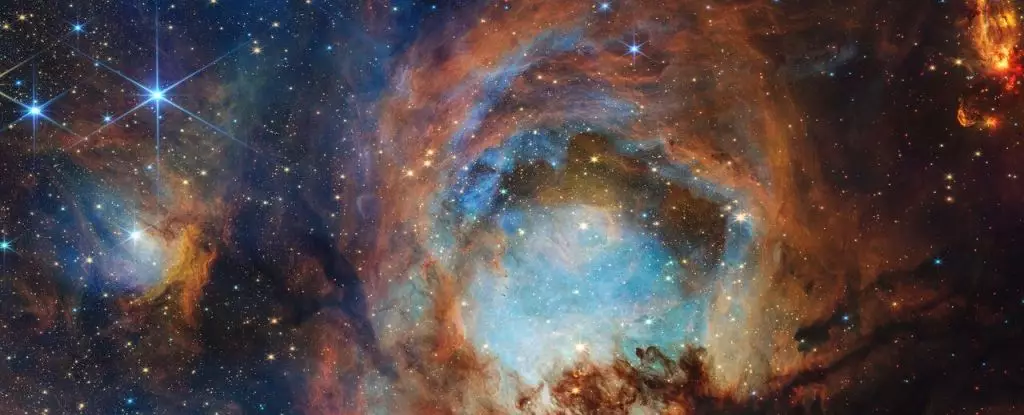Astrophysics has long been captivated by the enigmatic process of star formation, and recent advancements with the James Webb Space Telescope (JWST) have thrust this mystery into the spotlight. Unlike previous telescopes limited by their inability to penetrate dense cosmic dust, JWST’s infrared capabilities open a new window into the heart of stellar nurseries. The recent focus on the Cat’s Paw Nebula, a sprawling molecular cloud situated thousands of light-years away in Scorpius, exemplifies this leap in astronomical exploration. The nebula’s complex structure, resembling a giant feline’s paw, conceals vigorous star-building activity — a spectacle once shrouded behind veils of dust and gas, now vividly revealed thanks to JWST’s advanced instrumentation.
This image not only serves an aesthetic purpose but fundamentally challenges existing paradigms about how stars come to be. We see a multitude of formation stages—a testament to the dynamic, chaotic, yet ultimately organized process of cosmic evolution. The nebula’s dense filaments and glowing knots of gas demonstrate that star formation is an ongoing, turbulent affair, far from the simplistic models many scientists have held in the past. JWST’s ability to peer through dust clouds provides an unprecedented clarity, turning what was once an opaque mystery into a comprehensible, intricate ballet of matter giving rise to luminous giants.
Infrared Vision: Illuminating the Birth of Stars
One of the most innovative aspects of JWST is its proficiency in infrared astronomy, which allows it to see through cosmic dust that otherwise absorbs or scatters visible light. This capability is revolutionary in the context of star formation studies, where dust clouds are omnipresent. The telescope’s NIRCam (Near-Infrared Camera) captures the scene with breathtaking detail, revealing phenomena that have remained hidden for centuries: newborn stars still cocooned within their natal clouds, proto-stellar jets shooting out from their poles, and dense cores collapsing under gravity’s relentless pull.
Within the image, features such as the “Opera House”—a structure illuminated by a young star nearing the end of its formation—are emblematic of this transformative technology. The image shows a layered universe, with fiery red regions indicating bustling activity of ongoing star formation, and blue-white areas representing stars that have already shed their dusty cloaks. JWST doesn’t just observe these phenomena; it redefines our understanding of the sequence and scale of star birth, emphasizing the tumultuous and ephemeral nature of these cosmic events.
Revolutionizing Our Cosmic Perspective
Far beyond aesthetic appreciation, the insights gleaned from JWST’s observations catalyze paradigm shifts in our comprehension of the universe. For decades, astronomers relied mainly on optical telescopes, which could not penetrate the dense shrouds of dust where stars form. Now, with infrared vision, we confront a universe far more active and complex than previously imagined. The detailed structure within the nebula suggests that star formation is not a uniform process—it involves localized pockets of gravity pulling material together, resulting in a cascade of birth moments happening simultaneously at different scales.
Critically, this challenges the age-old notion that star formation occurs slowly and steadily. Instead, we are beginning to see that stellar nurseries are chaotic, bustling hubs of rapid activity, where colossal forces shape the future of galaxies alike. JWST’s extraordinary clarity provides not just images, but the data necessary to model these processes, making the invisible visible and the uncertain certain. As we interpret these insights, a new era of astrophysics emerges—one where cosmic origins are no longer just theoretical concepts, but observable, tangible phenomena fueling our insatiable curiosity about the universe’s deepest workings.

